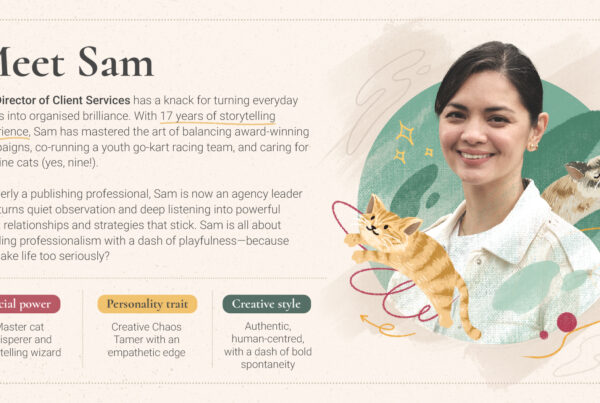
Much of what I know about content marketing comes from the West. Gurus like Rand Fishkin or Ryan Law are the go-to thought leaders and trailblazers when it comes to content and SEO best practices. But sometimes, these best practices don’t always suit the cultural context of the people we’re marketing to.
I wondered if there were Southeast Asian voices I could turn to for inspiration. People who could keep me on the pulse of content marketing trends, whose experience in the industry I could relate to. For example, the struggle of writing spicy thought leadership content for a conservative audience, figuring out what makes content feel human to Singaporeans in an AI-generated world, or content marketing during a recession.
So, I began spam-subscribing to Southeast Asian publications and content marketers — recommended by Google or my colleagues — and attempted to read their digests over the last couple of months.
I followed close to 20 newsletters — 10 new ones for this experiment, plus my existing subscriptions. In a way, this was also research for our newsletter, Rise (which you should totally subscribe to if you haven’t already). I wanted to understand the different promises that encourage marketers like me to sign up for a specific newsletter, as well as the value these newsletters offer to keep us subscribed and engaged.
Here’s what I found, plus my top 7 recommended newsletters for B2B content marketers in Southeast Asia.
Marketing Dojo by Garima Mamgain
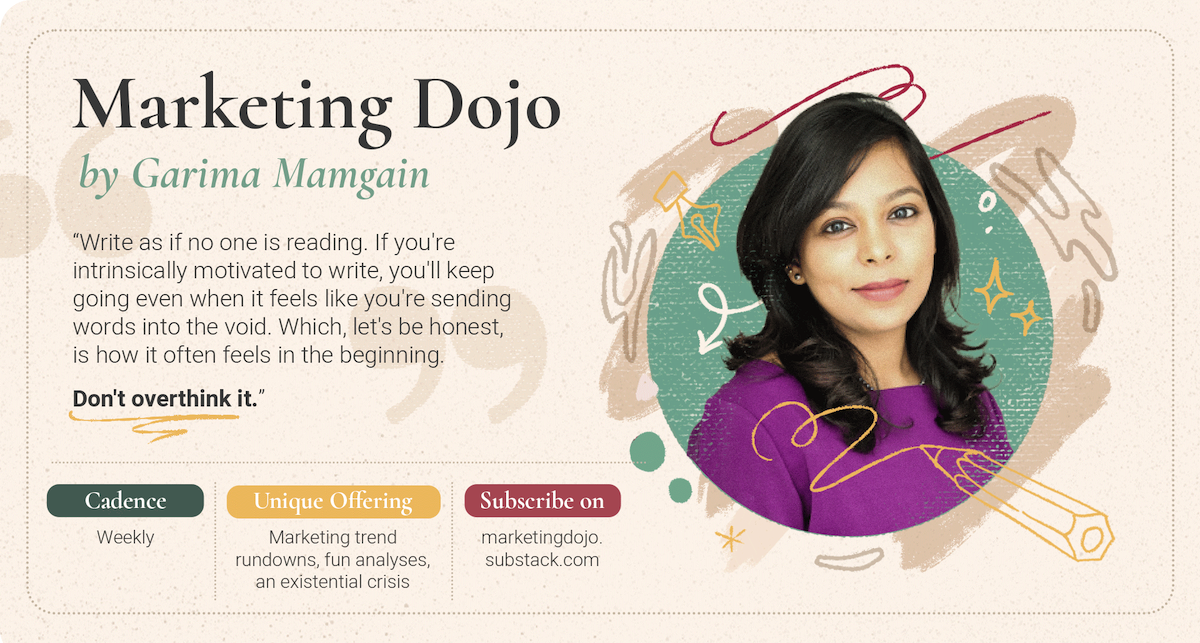
Garima is a Singapore-based marketer who writes a weekly marketing letter, Marketing Dojo. She’s held marketing roles at 3M, Audi, Porsche, and HSBC. Her weekly rundown offers a mix of trends and analyses, drawing from years of experience to break down what makes an ad or a campaign “good.”
I particularly liked her take on Singapore’s Health Minister Ong Ye Kung’s TikTok on vaping: That it was a timely, trendy, and insightful snippet that illustrated why this was a good example of content marketing (e.g. showing up where Gen Z lives, using their tone, not his).
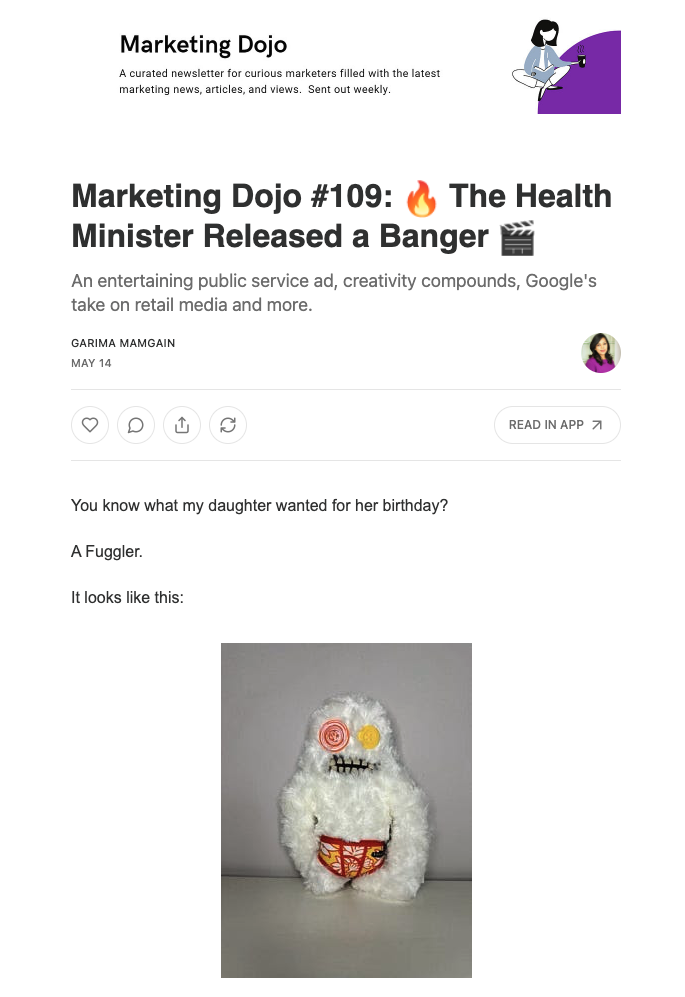
Plus, Garima opens every newsletter with a random thought, like how her daughter wanted a Fuggler for her birthday — a plushy that, in her words, was as if “a Yeti had botched-up denture implants.”
Why Garima started Marketing Dojo
“I started writing for three major reasons.
One, I wanted to stay curious. After over 15 years in marketing, primarily in large companies, I observed how brands often fall behind consumers. Writing became my way of staying close to the edge of what’s changing.
Writing helped me think more clearly. Writing forces you to slow down, reflect, and build a stronger point of view.
Third, I hoped to find other curious marketers. Sharing what I learned feels like a great way to connect.”
Garima’s best tip for anyone starting a newsletter
“Write as if no one is reading… and most importantly, aim for quality. With AI-generated content flooding inboxes, it’s easy to be average. Respect the time and attention of your subscribers by sharing what’s genuinely interesting and taking the time to form a thoughtful perspective.”
The Glimmer Code by Aiza Coronado
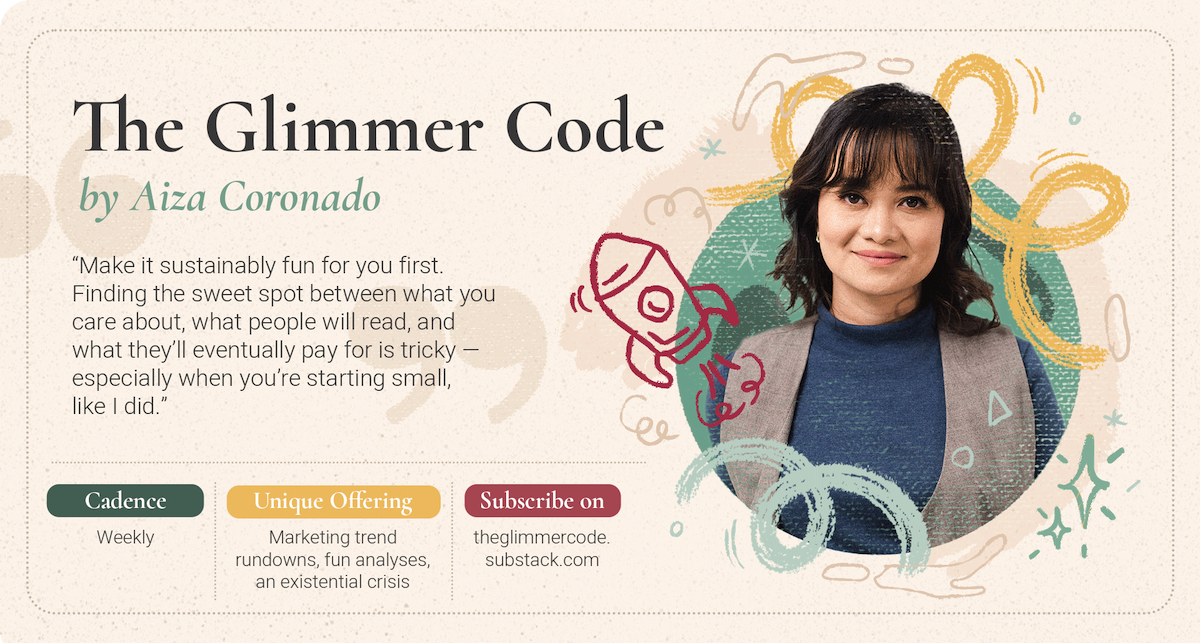
Aiza is a Philippines-based marketer who describes herself as a “lifecycle strategist for B2B brands and a content therapist for freelancers.” A therapist is a good analogy, considering the emotional highs and lows that come with working in the creative industry, which she touches in her newsletter, The Glimmer Code. She draws from her experiences as a freelancer and a B2B marketer to share insights on contemporary marketing trends.
I particularly enjoyed her piece on how to survive the brutal job market, as that is a topic that resonates with me and many fellow writers, editors, and marketers across Southeast Asia. She drew on her experience as a freelancer and turned that into advice for how marketers can navigate today’s job market. She advises us to think like a freelancer: pivot quickly, diversify our income streams, and remain flexible.
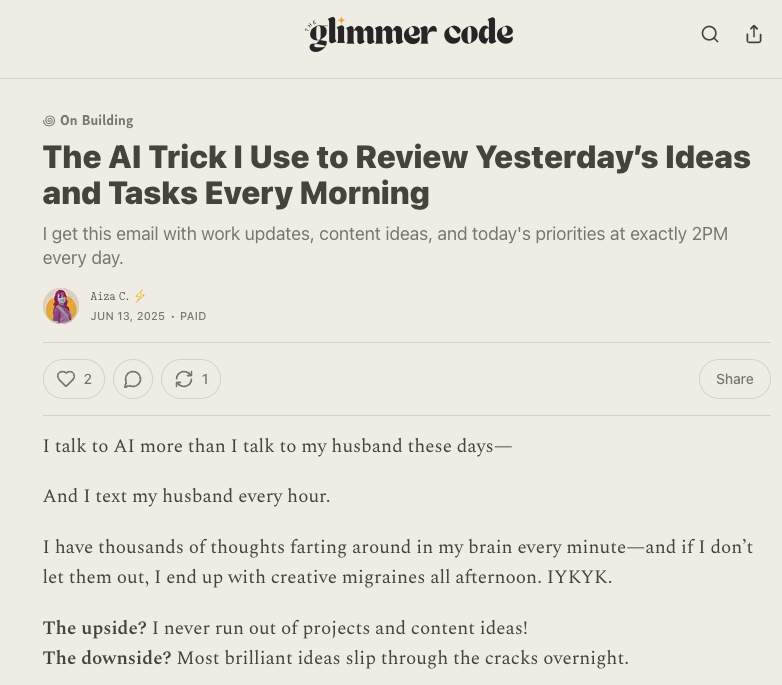
Why Aiza started The Glimmer Code
“I was tired of my best ideas disappearing into the social media void. I wanted a place to stretch my thinking, document what I was learning, and stay mentally sharp in an age where it’s so easy to outsource your thinking to AI. Writing The Glimmer Code became my way to think out loud, build credibility as a B2B Creator, and explore the intersection of behaviour, SaaS, and influence — not just as a marketer, but as a human trying to figure out my life’s work.”
Aiza’s best tip for anyone starting a newsletter
“Make it sustainably fun for you first. Finding the sweet spot between what you care about, what people will read, and what they’ll eventually pay for is tricky — especially when you’re starting small, like I did.
That’s why it’s so important to find a mix of topics you’re genuinely curious about and systems that help you stick to it. You’ve got to figure out how to keep going, even when nobody’s clapping. That’s exactly what I’m exploring in my newsletter, actually: what it really takes to move people with ideas and build momentum strategically.”
What Is An Insight? by Samit Malkani
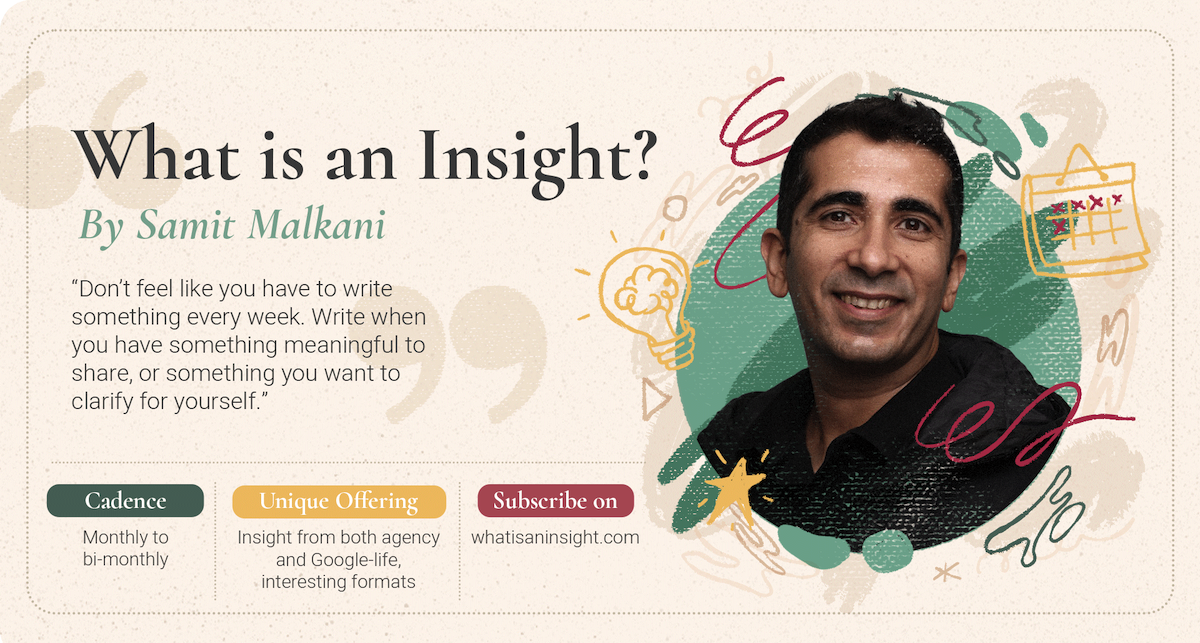
Samit Malkani is a Singapore-based brand marketer for Southeast Asia and Asia-Pacific for Google. Samit is one of those people who don’t produce content at a regular cadence for his newsletter What Is An Insight?, but I did find myself intrigued with his execution. Particularly, one newsletter where he celebrated 11 years at Google with a quiz illustrating the differences between agency life and Google life. He wrote two descriptions about a certain aspect of work, for example:
- a. Your calendar is important…one tool among many. It’s flexible and fluid, giving you the agility you need.
- b. Your calendar dictates your existence…the non-negotiable OS. You quickly learn to be punctual.
He makes you guess which description describes agency life and which describes Google. (FYI a. Is agency and b. Is Google.) Fun, creative, interesting.
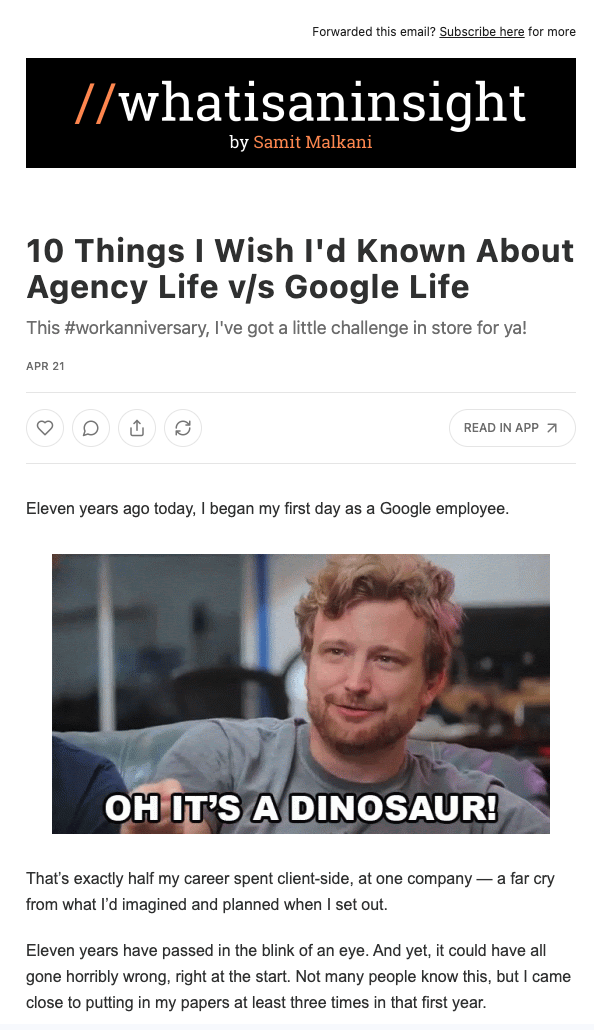
Why Samit started What Is An Insight?
“I originally started What Is An Insight? as a blog in 2009. It went on hiatus for many years after 2015 or 2016, and then I brought it back as a newsletter in 2024.”
Samit’s best tip for anyone starting a newsletter
“Don’t feel like you have to write something every week. Write when you have something meaningful to share, or something you want to clarify for yourself.”
Inside the Marketing Mind by Mansi Chopra
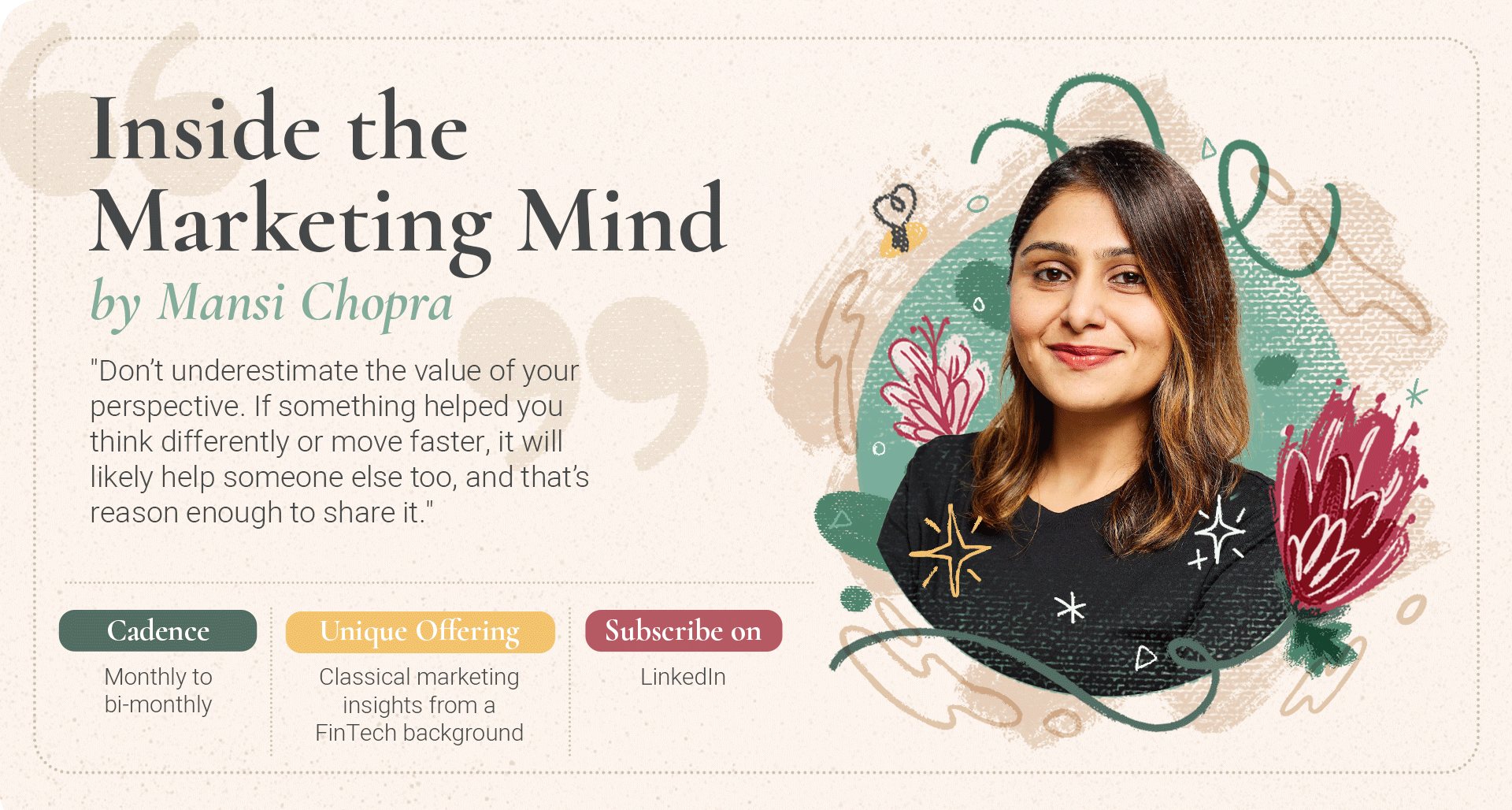
Currently the CMO at Singapore-based fintech Finmo, Mansi previously led the marketing efforts for other fintechs such as Thunes, Nium, and Alipay. She was also named one of the Top 30 Most Influential Fintech Marketers in 2025. She describes her newsletter Inside the Marketing Mind as a place “where marketing trends meet workplace wisdom and pop culture inspiration.”
An issue that caught my eye was Booth or No Booth? 6 Ways Startups Can Own the Room at Industry Events. Whether to set up a booth or not at an event is a constant debate among startups with limited budgets. With Content set up a booth for the first time at the Digital Marketing World Forum Asia last February. There was a lot of uncertainty about the success of our booth, but in the end, it turned out to be an insightful experience. That’s why Mansi’s last statement of this blog post resonated: “Conferences are a huge investment, of time, money, and energy. But if you’re intentional about how you show up, the return can be exponential.”
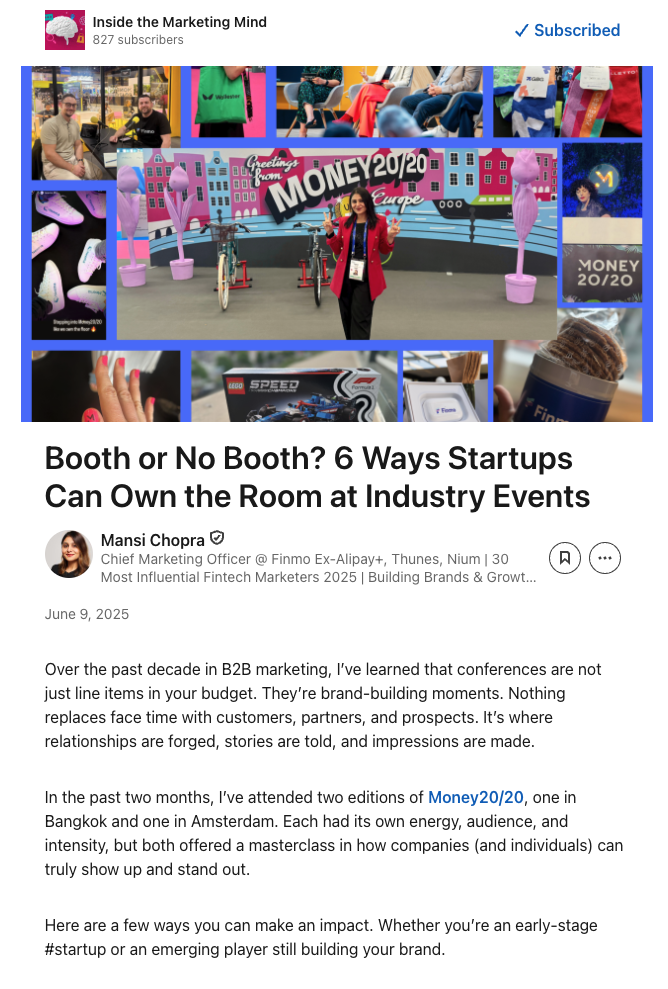
Why Mansi started Inside the Marketing Mind
“When I took on the role of CMO, I found myself navigating a lot of uncharted territory – not just in leading marketing at a strategic level, but also in shaping culture, influencing cross-functional priorities, and driving measurable growth. Writing became a way to reflect on that journey in real time. Today, the newsletter blends sharp takes on B2B marketing with honest reflections on stepping into leadership for the first time. It’s also become a way to build the playbook I wish I had; something future marketing leaders can turn to as they take on the role themselves.”
Mansi’s best tip for anyone starting a newsletter
“Don’t underestimate the value of your perspective. If something helped you think differently or move faster, it will likely help someone else too, and that’s reason enough to share it.
Treat your newsletter like a product. Know who it’s for, what value you’re delivering, and why it matters. Consistency matters, but clarity matters more. People aren’t looking for polish, they’re looking for insight. The best newsletters are built on real experience, a strong point of view, and the intent to serve. If you start there, your audience will follow.”
The Woke Salaryman by He Ruiming and Wei Choon Goh
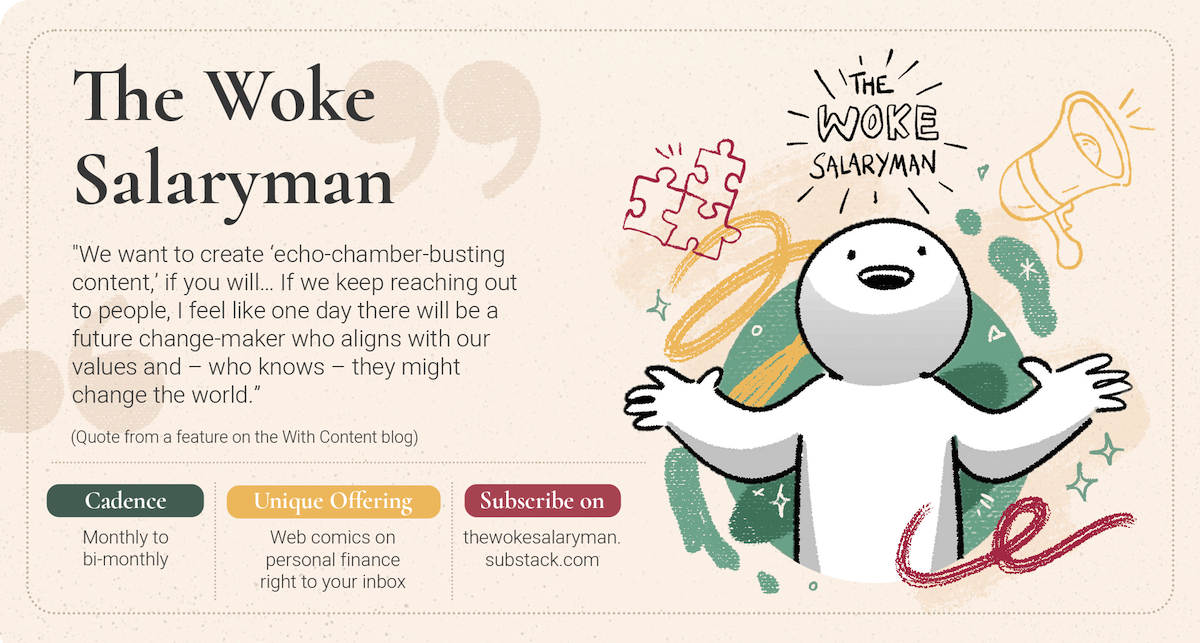
We’ve featured The Woke Salaryman a couple of times on the blog already, which is to say that we’re fans of their work. Founders He Ruiming and Wei Choon Goh do a good job of turning a benign topic like personal finance into something insightful, engaging, and truly personal. They draw on the Singapore experience, referencing national service, HDBs, and the overwork culture, and incorporate local slang, such as “paiseh,” into their comic strips.
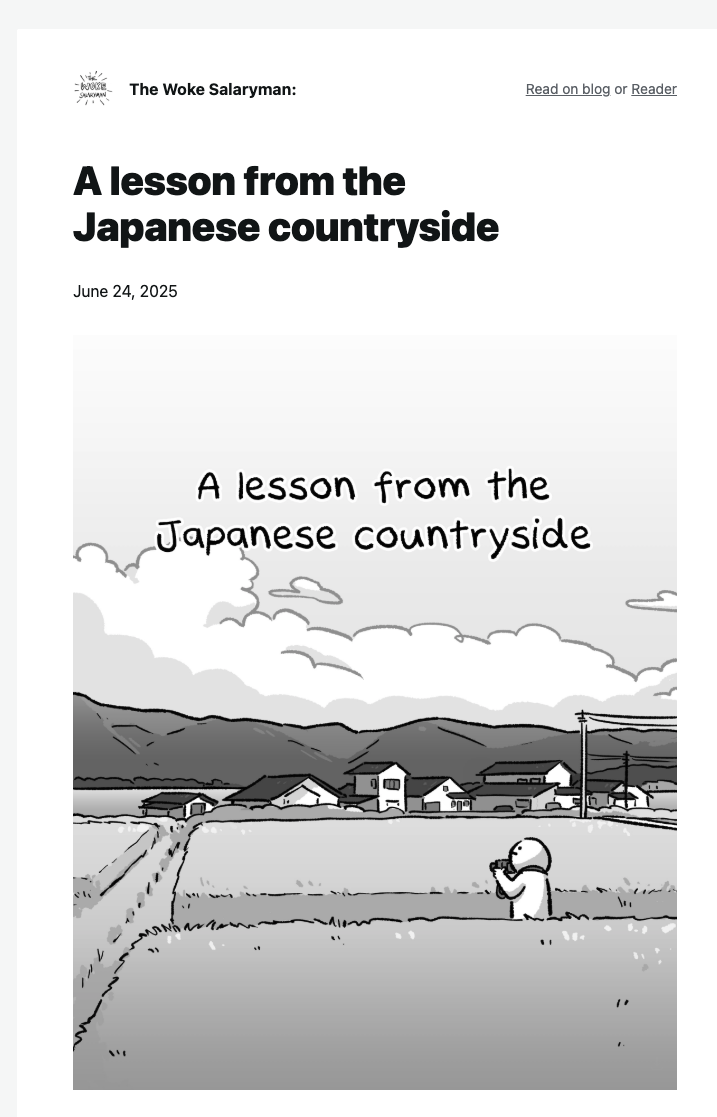
Their newsletter is another avenue for the team to send their web comics, which you can also find on their website and social media platforms. But if you intentionally want to stay up to date with their webcomics, you can subscribe.
Rise by With Content
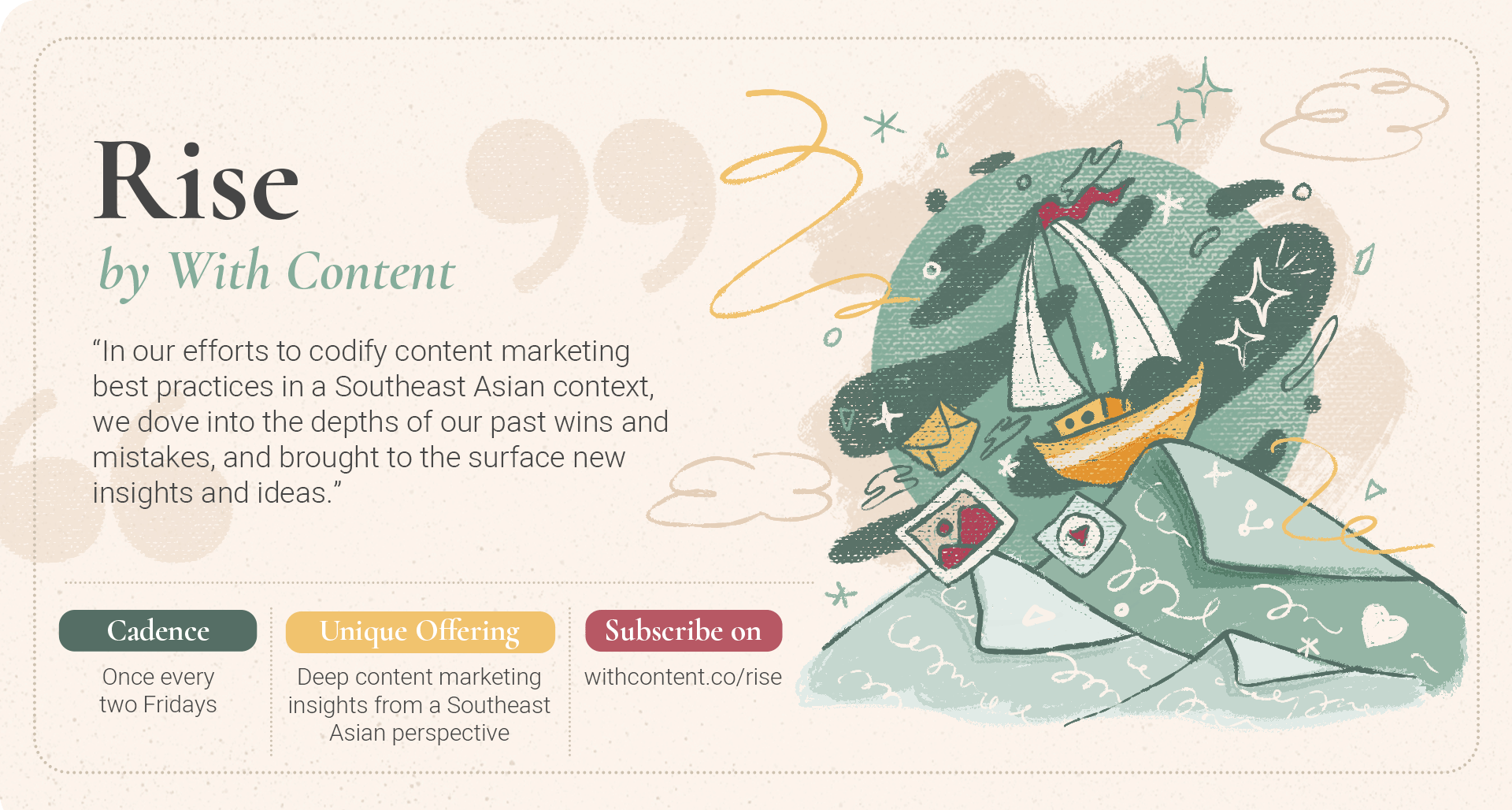
This is a no-brainer for me because our team produces it. Our newsletter Rise provides content marketing insights from a Southeast Asian perspective. We bring ‘content marketing best practices’ down to earth by examining how marketers can actually apply them in their daily work, amidst the reality of corporate complexity, ever-shifting trends, and Southeast Asians’ cultural communication quirks.
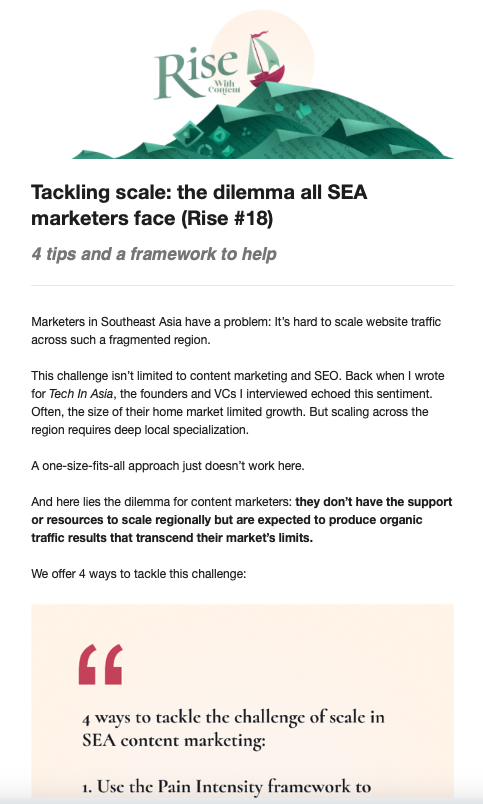
But don’t just take our word for it.
See what our subscribers have to say:
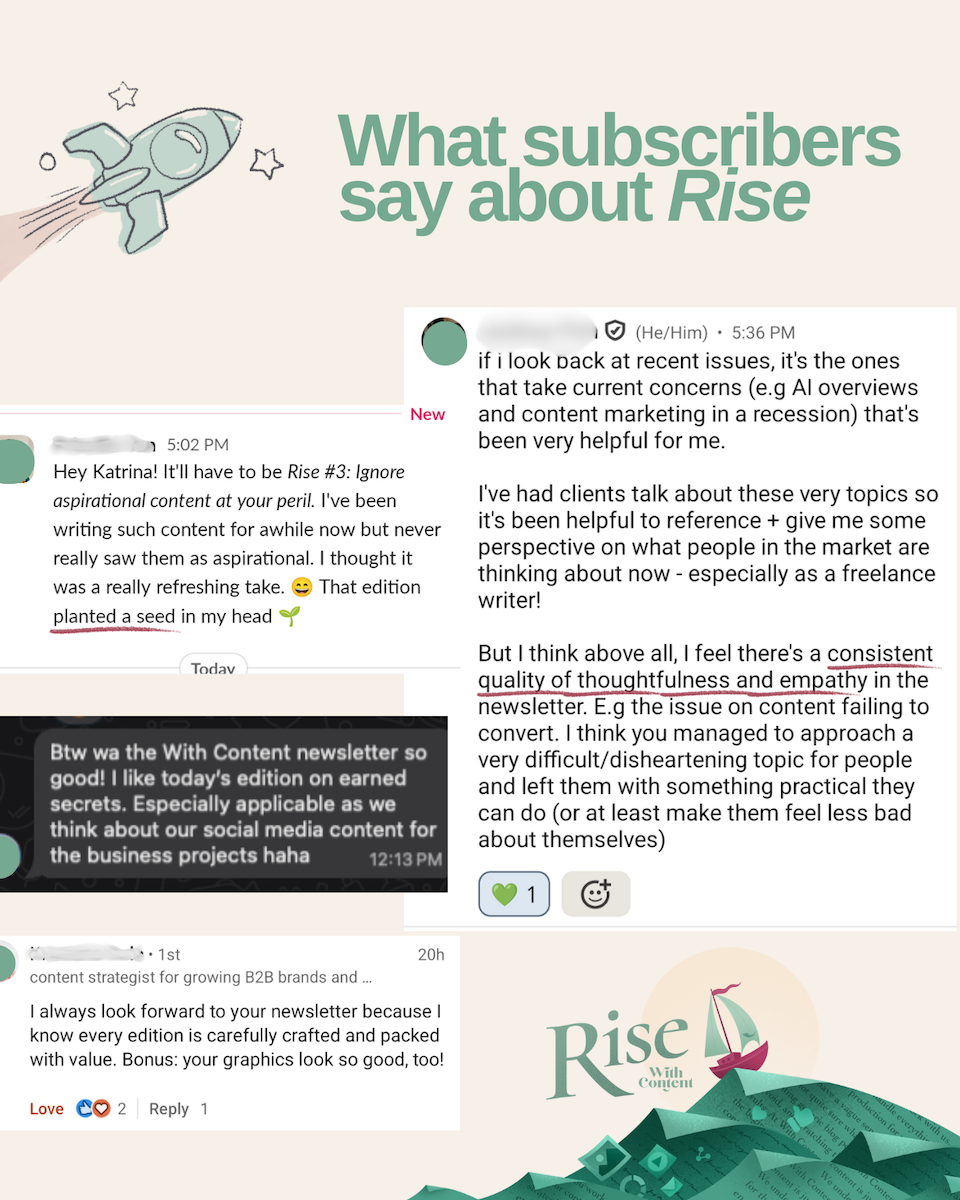
Asia Daily Briefing by Nikkei Asia
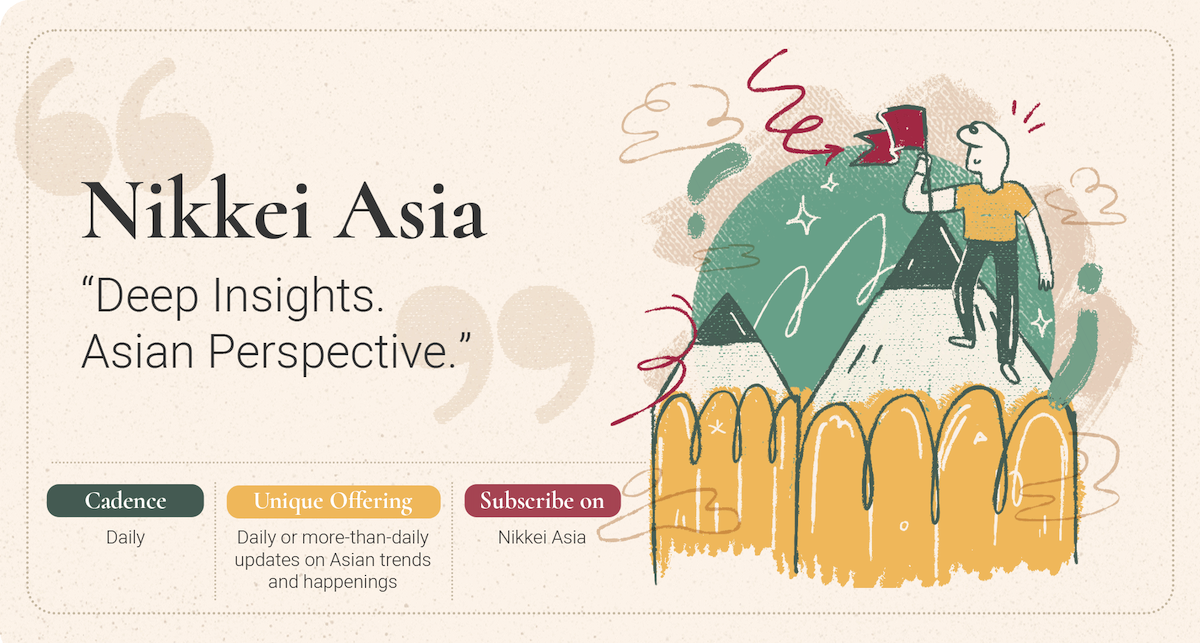
Nikkei Asia’s newsletter offers daily (like, three times a day) updates on what’s going on around the region. While this doesn’t have any direct correlation to my occupation as a content marketer, it does give me quick and frequent insights into what’s happening around the world. This helps me gauge the latest trends, political atmosphere, and general sentiments. There are certainly other publications out there that provide a similar cadence of daily news, but I personally subscribe to Nikkei’s insights.
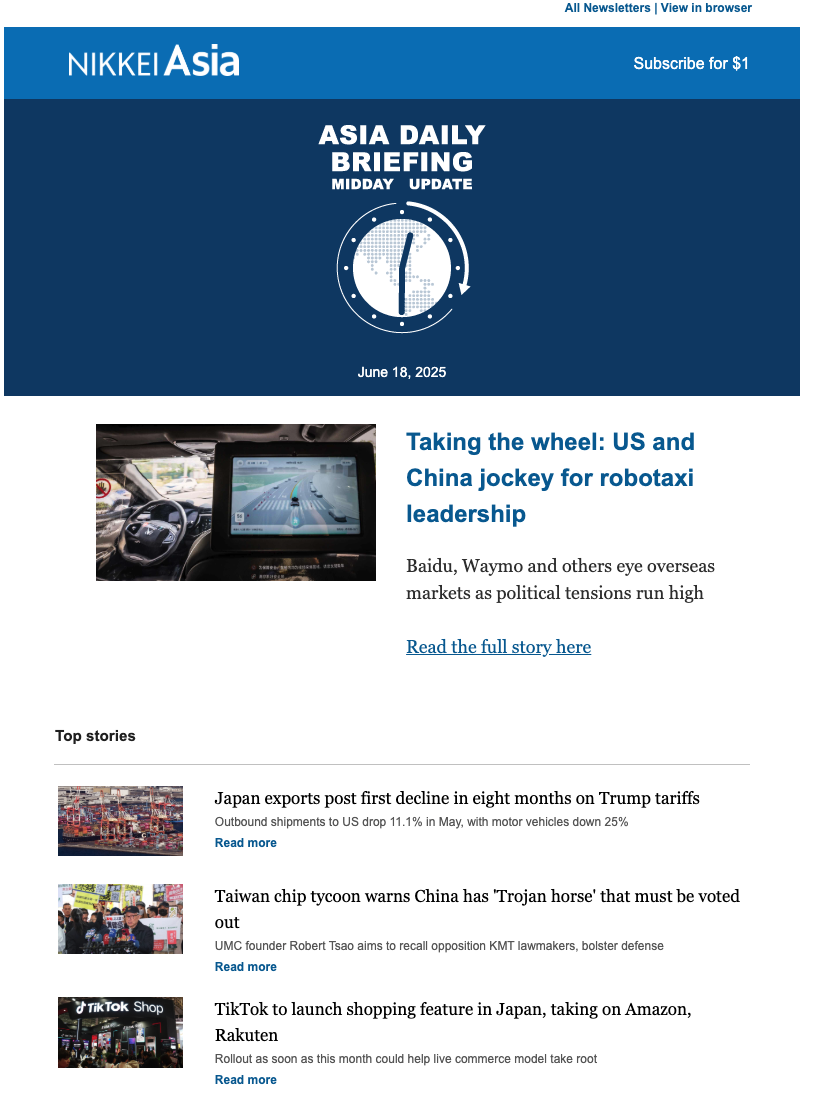
I’ll be honest, I just skim through the headlines — but that’s enough for my purposes.
More Southeast Asian voices in content marketing
At With Content, we believe strategy should always consider real-world contexts and constraints. That’s why we’re trying to amplify more Southeast Asian voices in content marketing — to learn more about the challenges and success stories of content marketing practitioners in this region. If you want to recommend a newsletter by a Southeast Asian marketer, let us know at hello@withcontent.co!
—
200+ industry-leading tech companies in Southeast Asia are happy clients of With Content. Join them and start delivering valuable content to your potential customers today.



